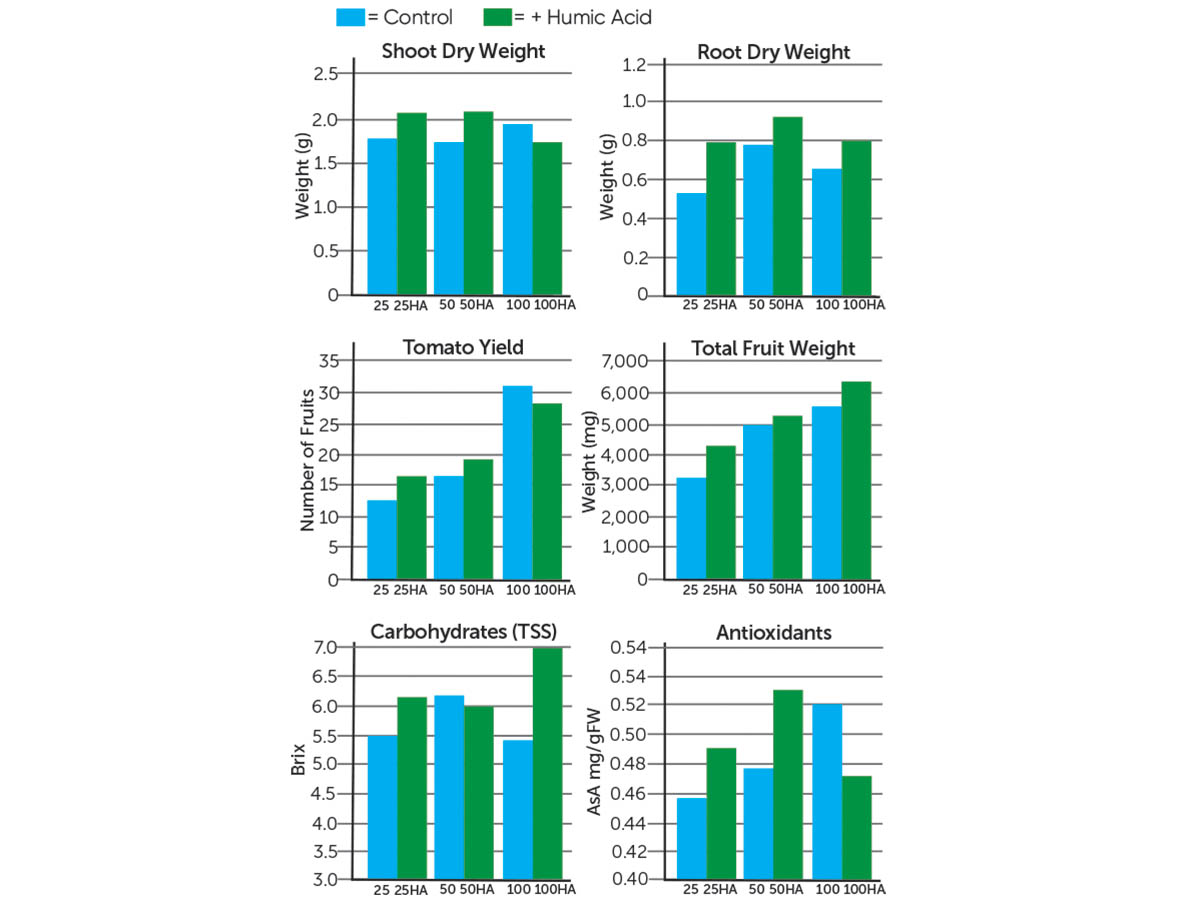Introduction
In this study (originally published in Frontiers in Plant Science, May 2021, Vol. 12:660224), the biostimulant properties of a sedimentary shale ore-extracted humic acid (HA) were tested on Micro Tom tomato plants under increasing nutritional stress
Materials & Methods
A sedimentary lignite ore (Idaho), ground to pass a 1,000 µm sieve, was used as the humic acid source. Isolation of the HA was obtained through alkaline extraction, with a purification step through HCl/HF performed to reduce mineral ash content.
Tomato seeds (Solanum lycopersicum L., Micro Tom) were surface sterilized and individually sown into pots containing a mixture of coconut coir and sand (2:1). Plants were grown for 4 months in a climate-controlled growth chamber. On day 15, seedlings were provided with a standard NPK fertilizer solution at either 25%, 50%, or 100% of the recommended amount and watered at 70% of water-holding capacity. HAs were added at the pre-plant stage.
Nutritional dose and HA concentration were selected based on a previous experiment so that a nutritional stress condition was triggered at low nutrient levels. A total of 6 treatments with 8 replicates per treatment were arranged in a randomized complete block design.
During the experiment, plant height was tracked and chlorophyll content was measured. At the end of the experiment, roots and shoots were separated and fresh and dry weights were determined. Tomato yield was evaluated by measuring the number of fruits and the fresh weights. Quality (acidity and Brix) and antioxidant parameters were also assessed.
Results
Humic acid application proved effective in alleviating the nutrient stress of tomatoes, with better results than control plants that did not receive humic acids. Increased yield (up to 19%) and fruit quality (in the range of + 10%–24%), higher ascorbic acid content, and better root growth were the main parameters affected by HA application, mostly when the plants were under high nutrient stress conditions (25% recommended nutrition).
Analysis of the chemical composition of HA revealed the presence of antioxidants such as flavonoids and prooxidants such as quinones. The researchers suggested that the combined action of these elements could prime plant defense systems to rapidly cope with stress situations by reprogramming plant development status.

Figure 1: Carbohydrates are increased as total soluble solids (TSS) in tomatoes
treated with HA. Plants treated with HA under stress conditions accumulated higher levels of antioxidants.
Discussion
The outcomes of this study highlight the role of humic acids in enhancing nutrient efficiency uptake. The application of HA at low NPK supply improved tomato yield and plant ability to cope with nutritional stress. The use of humic acids as a biostimulant represents a cost-effective and environmentally friendly tool to improve nutrient uptake by promoting sustainable agricultural practices.

